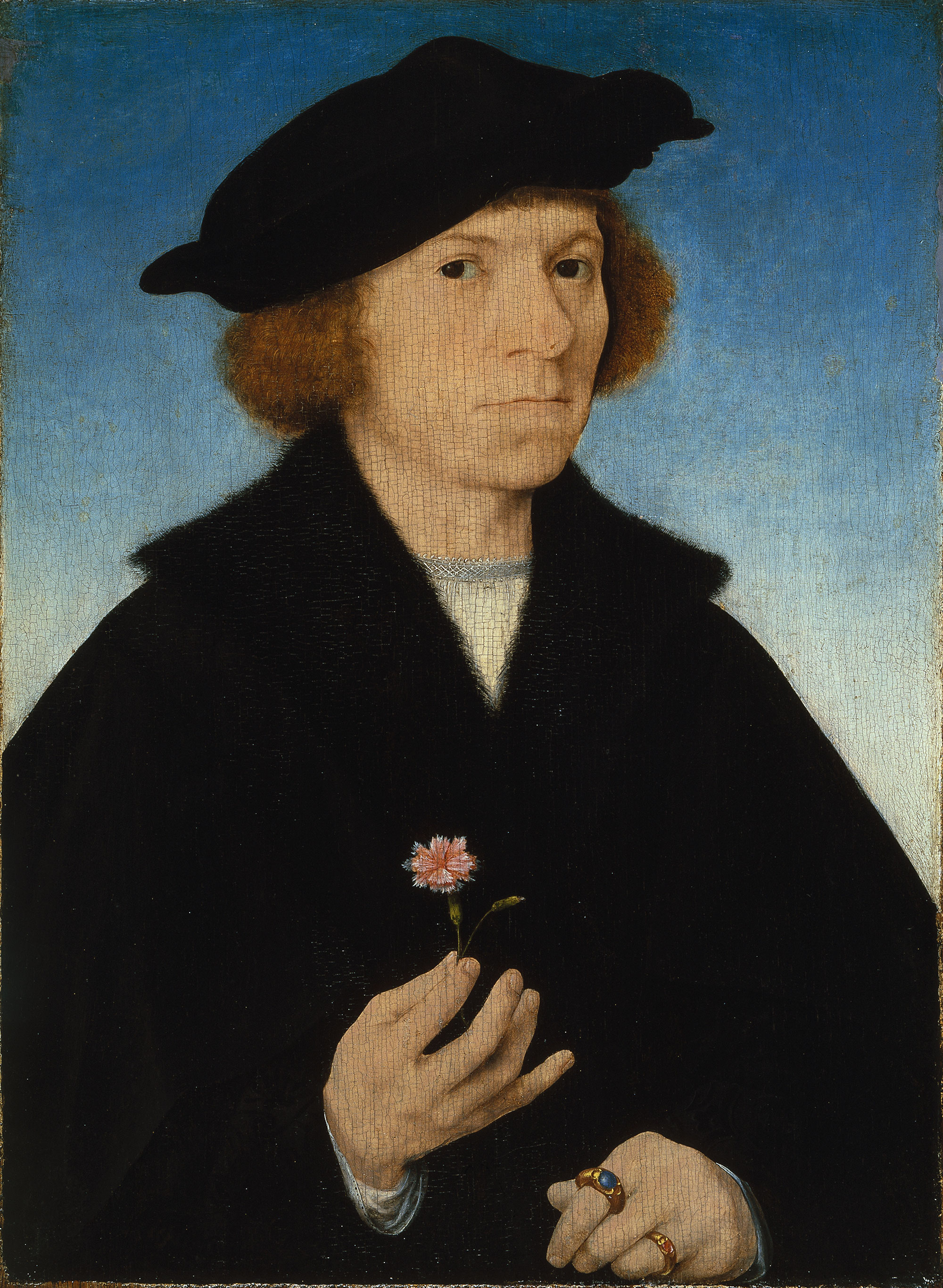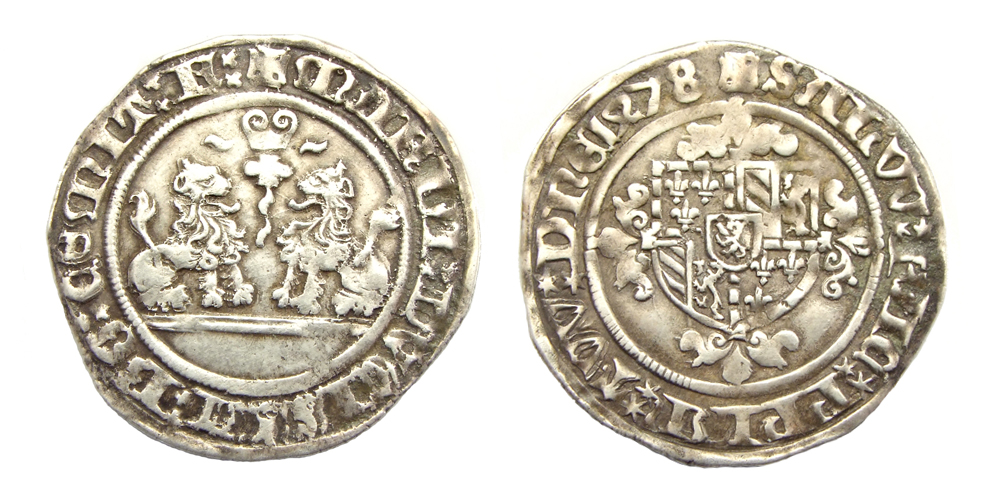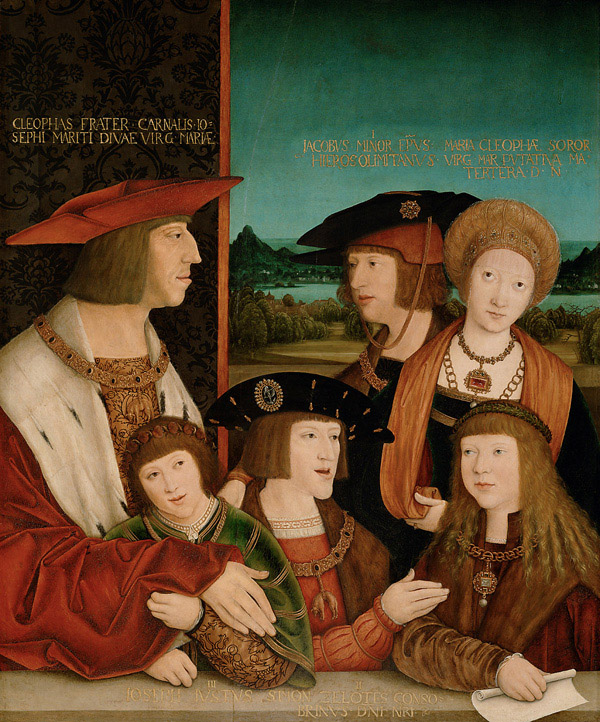|
Eleanor Of Austria
Eleanor of Austria (15 November 1498 – 25 February 1558), also called Eleanor of Castile, was Queen of Portugal from 1518 to 1521 as the wife of King Manuel I and Queen of France from 1530 to 1547 as the wife of King Francis I. She also held the Duchy of Touraine (1547–1558) in dower. She is called "Leonor" in Spanish and Portuguese and "Éléonore" or "Aliénor" in French. She was the eldest child of Duke Philip of Burgundy and Queen Joanna of Castile, and the elder sister of Holy Roman Emperor Charles V, and her life was dominated by her role in the international dynastic politics of the period. Life Eleanor was born in 1498 at Leuven, the eldest child of Philip of Austria and Joanna of Castile, later king and queen of Castile. Her father was the son of Holy Roman Emperor Maximilian I and Duchess Mary of Burgundy, while her mother was the daughter of King Ferdinand II of Aragon and Queen Isabella I of Castile. Her siblings were Holy Roman Emperors Charles ... [...More Info...] [...Related Items...] OR: [Wikipedia] [Google] [Baidu] |
Joos Van Cleve
Joos van Cleve (; also Joos van der Beke; c. 1485–1490 – 1540/1541) was a leading painter active in Antwerp from his arrival there around 1511 until his death in 1540 or 1541. Within Dutch and Flemish Renaissance painting, he combines the traditional techniques of Early Netherlandish painting with influences of more contemporary Renaissance painting styles. An active member and co-deacon of the Guild of Saint Luke of Antwerp, he is known mostly for his religious works and portraits, some of royalty. He ran a large workshop, with at least five pupils and other assistants, which produced paintings in a variety of styles over his career. As a skilled technician, his art shows sensitivity to color and a unique solidarity of figures. His style is highly eclectic: he was one of the first to introduce broad world landscapes in the backgrounds of his paintings, sometimes collaborating with Joachim Patinir, which would become a popular technique of sixteenth century northern Renaissa ... [...More Info...] [...Related Items...] OR: [Wikipedia] [Google] [Baidu] |
List Of Portuguese Royal Consorts
Portugal had only two queens regnant: Maria I of Portugal, Maria I and Maria II of Portugal, Maria II (and, arguably, two more: Beatrice of Portugal, Beatriz for a short period of time in the 14th century; and Teresa of León, Countess of Portugal, Teresa, in the 12th century, which technically makes her the first ruler and first queen of Portugal). The other queens were queens consort, wives of the Portuguese kings. Many of them were highly influential in the History of Portugal, country's history, either ruling as regents for their minor children or having a great influence over their spouses. Elizabeth of Aragon, who was married to Denis of Portugal, Denis, was made a saint after there were said to have been miracles performed after her death. The husband of a Portuguese queen regnant could only be titled king after the birth of any child from that marriage. Portugal had two princes consort – Auguste de Beauharnais, Auguste de Beauharnais, 2nd Duke of Leuchtenberg and Fer ... [...More Info...] [...Related Items...] OR: [Wikipedia] [Google] [Baidu] |
Charles V, Holy Roman Emperor
Charles V (24 February 1500 – 21 September 1558) was Holy Roman Emperor and Archduke of Austria from 1519 to 1556, King of Spain (as Charles I) from 1516 to 1556, and Lord of the Netherlands as titular Duke of Burgundy (as Charles II) from 1506 to 1555. He was heir to and then head of the rising House of Habsburg. His dominions in Europe included the Holy Roman Empire, extending from Germany to northern Italy with rule over the Austrian hereditary lands and Burgundian Low Countries, and Spain with its possessions of the southern Italian kingdoms of Naples, Sicily and Sardinia. In the Americas, he oversaw the continuation of Spanish colonization and a short-lived German colonization. The personal union of the European and American territories he ruled was the first collection of realms labelled " the empire on which the sun never sets". Charles was born in Flanders to Habsburg Archduke Philip the Handsome, son of Maximilian I, Holy Roman Emperor and Mary of Burg ... [...More Info...] [...Related Items...] OR: [Wikipedia] [Google] [Baidu] |
Isabella I Of Castile
Isabella I (; 22 April 1451 – 26 November 1504), also called Isabella the Catholic (Spanish: ''Isabel la Católica''), was Queen of Castile and List of Leonese monarchs, León from 1474 until her death in 1504. She was also Queen of Aragon from 1479 until her death as the wife of King Ferdinand II of Aragon, Ferdinand II. Reigning together over a Dynastic union, dynastically unified Spain, Isabella and Ferdinand are known as the Catholic Monarchs of Spain, Catholic Monarchs. Her reign marked the end of Reconquista and also the start of Spanish Empire and dominance of Spain over European Politics for the next century. After a struggle to claim the throne, Isabella reorganized the governmental system, brought the crime rate down, and unburdened the kingdom of the debt which her half-brother King Henry IV of Castile, Henry IV had left behind. Isabella's marriage to Ferdinand of Aragon in 1469 created the basis of the ''de facto'' unification of Spain. Her reforms and those she ... [...More Info...] [...Related Items...] OR: [Wikipedia] [Google] [Baidu] |
Ferdinand II Of Aragon
Ferdinand II, also known as Ferdinand I, Ferdinand III, and Ferdinand V (10 March 1452 – 23 January 1516), called Ferdinand the Catholic, was King of Aragon from 1479 until his death in 1516. As the husband and co-ruler of Queen Isabella I of Castile, he was also King of Castile from 1475 to 1504 (as Ferdinand V). He reigned jointly with Isabella over a Dynastic union, dynastically unified Spain; together they are known as the Catholic Monarchs. Ferdinand is considered the ''de facto'' first king of Spain, and was described as such during his reign, even though, legally, Crown of Castile, Castile and Crown of Aragon, Aragon remained two separate kingdoms until they were formally united by the Nueva Planta decrees issued between 1707 and 1716. The Crown of Aragon that Ferdinand inherited in 1479 included the kingdoms of Kingdom of Aragon, Aragon, Kingdom of Valencia, Valencia, Kingdom of Majorca, Majorca, Kingdom of Sardinia, Sardinia, and Kingdom of Sicily, Sicily, as well as ... [...More Info...] [...Related Items...] OR: [Wikipedia] [Google] [Baidu] |
Mary Of Burgundy
Mary of Burgundy (; ; 13 February 1457 – 27 March 1482), nicknamed the Rich, was a member of the House of Valois-Burgundy who ruled the Burgundian lands, comprising the Duchy of Burgundy, Duchy and Free County of Burgundy, County of Burgundy and the Burgundian Netherlands, from 1477 to her death. As the only child of Charles the Bold, Duke of Burgundy, and his wife Isabella of Bourbon, Mary inherited the Burgundian lands at the age of 19 upon the death of her father in the Battle of Nancy on 5 January 1477. In order to counter the appetite of the French king Louis XI for her lands, she married Maximilian I, Holy Roman Emperor, Maximilian of Austria, with whom she had two children. The marriage kept large parts of the Burgundian lands from disintegration, but also changed the dynasty from Valois to Habsburg (the Duchy of Burgundy itself soon became a French possession). This was a turning point in European politics, leading to a French–Habsburg rivalry that would endure for c ... [...More Info...] [...Related Items...] OR: [Wikipedia] [Google] [Baidu] |
Holy Roman Emperor Maximilian I
Maximilian I (22 March 1459 – 12 January 1519) was King of the Romans from 1486 and Holy Roman Emperor from 1508 until his death in 1519. He was never crowned by the Pope, as the Italienzug, journey to Rome was blocked by the Republic of Venice, Venetians. He proclaimed himself elected emperor in 1508 at Trento, Trent, with Pope Julius II later recognizing it. This broke the tradition of requiring a papal coronation for the adoption of the Imperial title. Maximilian was the only surviving son of Frederick III, Holy Roman Emperor, and Eleanor of Portugal, Holy Roman Empress, Eleanor of Portugal. From his coronation as King of the Romans in 1486, he ran a double government, or ''Doppelregierung'' with his father until Frederick's death in 1493. Maximilian expanded the influence of the House of Habsburg through war and his marriage in 1477 to Mary, Duchess of Burgundy. However, he also lost his family's lands in Switzerland to the Swiss Confederacy. Through the marriage of his son ... [...More Info...] [...Related Items...] OR: [Wikipedia] [Google] [Baidu] |
King And Queen Of Castile
This is a list of kings regnant and queens regnant of the Kingdom and Crown of Castile. For their predecessors, see List of Castilian counts. Kings and Queens of Castile Jiménez dynasty House of Ivrea / Burgundy The following dynasts are descendants, in the male line, of Urraca's first husband, Raymond of Burgundy. Civil War In 1366, Peter's conduct led to an uprising by his illegitimate half-brother Henry with support from France and Aragon. After three years, Henry triumphed in 1369, and personally executed Peter. House of Trastámara Henry II, the founder of the Trastámara dynasty was installed after victory in the Castilian Civil War. House of Habsburg House of Bourbon The Crown of Castile existed in its own right within the Spanish crown and with its own law until the arrival of the Bourbon dynasty after the War of Spanish Succession. See also * List of Castilian consorts * *List of Aragonese monarchs *List of Leonese monarchs *List of ... [...More Info...] [...Related Items...] OR: [Wikipedia] [Google] [Baidu] |
Charles V And His Sisters
Charles is a masculine given name predominantly found in English and French speaking countries. It is from the French form ''Charles'' of the Proto-Germanic name (in runic alphabet) or ''*karilaz'' (in Latin alphabet), whose meaning was "free man". The Old English descendant of this word was '' Ċearl'' or ''Ċeorl'', as the name of King Cearl of Mercia, that disappeared after the Norman conquest of England. The name was notably borne by Charlemagne (Charles the Great), and was at the time Latinized as ''Karolus'' (as in ''Vita Karoli Magni''), later also as '' Carolus''. Etymology The name's etymology is a Common Germanic noun ''*karilaz'' meaning "free man", which survives in English as churl (James (wikt:Appendix:Proto-Indo-European/ǵerh₂-">ĝer-, where the ĝ is a palatal consonant, meaning "to rub; to be old; grain." An old man has been worn away and is now grey with age. In some Slavic languages, the name ''Drago (given name), Drago'' (and variants: ''Dragom ... [...More Info...] [...Related Items...] OR: [Wikipedia] [Google] [Baidu] |
Holy Roman Emperor Charles V
Charles V (24 February 1500 – 21 September 1558) was Holy Roman Emperor and Archduke of Austria from 1519 to 1556, King of Spain (as Charles I) from 1516 to 1556, and Lord of the Netherlands as titular Duke of Burgundy (as Charles II) from 1506 to 1555. He was heir to and then head of the rising House of Habsburg. His dominions in Europe included the Holy Roman Empire, extending from Germany to northern Italy with rule over the Austrian hereditary lands and Burgundian Low Countries, and Spain with its possessions of the southern Italian kingdoms of Naples, Sicily and Sardinia. In the Americas, he oversaw the continuation of Spanish colonization and a short-lived German colonization. The personal union of the European and American territories he ruled was the first collection of realms labelled " the empire on which the sun never sets". Charles was born in Flanders to Habsburg Archduke Philip the Handsome, son of Maximilian I, Holy Roman Emperor and Mary of Burgundy, ... [...More Info...] [...Related Items...] OR: [Wikipedia] [Google] [Baidu] |
Dower
Dower is a provision accorded traditionally by a husband or his family, to a wife for her support should she become widowed. It was settlement (law), settled on the bride (being given into trust instrument, trust) by agreement at the time of the wedding, or as provided by law. The dower grew out of the practice of bride price, which was given over to a bride's family well in advance for arranging the marriage, but during the early Middle Ages, was given directly to the bride instead. However, in popular parlance, the term may be used for a life interest in property settled by a husband on his wife at any time, not just at the wedding. The verb wikt:dower#Verb, ''to dower'' is sometimes used''.'' In popular usage, the term ''dower'' may be confused with: *A ''dowager'' is a widow (who may receive her dower). The term is especially used of a noble or royal widow who no longer occupies the position she held during the marriage. For example, Queen Elizabeth The Queen Mother, Queen ... [...More Info...] [...Related Items...] OR: [Wikipedia] [Google] [Baidu] |
Touraine
Touraine (; ) is one of the traditional provinces of France. Its capital was Tours. During the political reorganization of French territory in 1790, Touraine was divided between the departments of Indre-et-Loire, :Loir-et-Cher, Indre and Vienne. Geography Traversed by the river Loire and its tributaries the Cher, the Indre and the Vienne, Touraine makes up a part of the western Paris Basin. It is well known for its viticulture. The TGV high-speed train system, which connects Tours with Paris (200 kilometers away) in just over an hour, has made Touraine a place of residence for people who work in the French capital but seek a different quality of life. History Touraine takes its name from a Celtic tribe called the Turones, who inhabited the region about two thousand years ago. In 1044, the control of Touraine was given to the Angevins, who (as the House of Plantagenet) became kings of England in 1154, the castle of Chinon being their greatest stronghold. In 1205, Phil ... [...More Info...] [...Related Items...] OR: [Wikipedia] [Google] [Baidu] |







